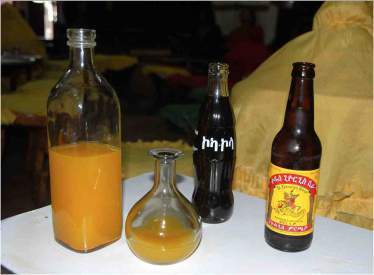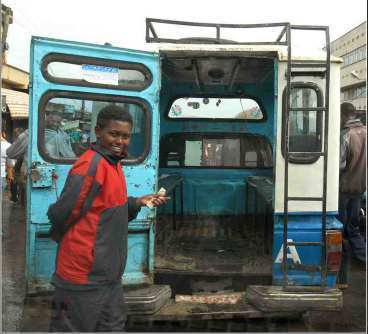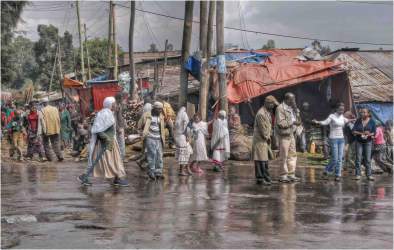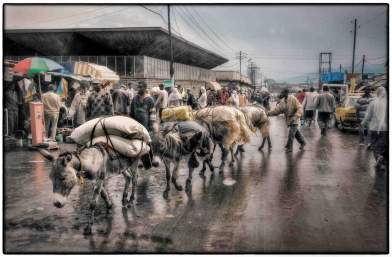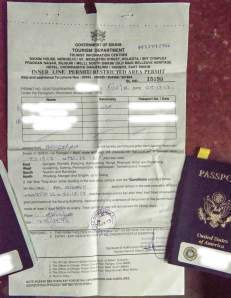Bill Murray's Blog, page 132
March 3, 2014
“Крым. Crimea. Мой Край”
Tourism video for Crimea. Click back and forth between it and this live camera of the port at Kerch, Ukraine, which is separated from Russia by a 25 minute ferry. If you’re lucky you’ll see a real, live invasion.


March 1, 2014
да. пожалуйста. Yes. Unanimously.
“I hereby submit to the Federation Council of the Federal Assembly of the Russian Federation a letter on the use of the Armed Forces of the Russian Federation in the territory of Ukraine pending normalisation of the public and political situation in that country.”


February 24, 2014
Trouble Brewing?
February 22, 2014
Inside Yanukovych’s Palace
Via an acquaintance in Ukraine, here is a tour of the property abandoned by President – maybe – for the moment – Yanukovych earlier today. Kyiv Post reports that
“Opposition leaders who are now in control of the mansion say they fished documents out of the Kyiv Sea that leads to the Dnipro River and are drying them in a hangar. Some of them reportedly involve journalist Tetyana Chornovol, who blames Yanukovych for ordering her Dec. 25 beating in retaliation for her investigative reports of his alleged corruption. The treasure trove also reportedly includes expense invoices for construction work at Mezhyhyria, a blacklist of journalists and a list of license plate number of cars that Chornovol drives.”
Meanwhile watch Karkiv today, where Yanukovych is reported to have fled. We talked about this three days ago and now sure enough, Time magazine’s Moscow correspondent tweets
“Russia appears to be preparing a grab for parts of Ukraine. Senior Moscow delegates in Kharkiv. Crimea asking for “protection” from Rus army”
RT Russian television is doing its part. An ‘”expert” calls the Maidan a “malevolent mob.”


February 19, 2014
Ominous Brotherly Love
Here it comes. It didn’t even wait for the end of the Olympics.
Meanwhile the Associated Press quotes the American president this afternoon as saying, ”‘there will be consequences’ for violence in Ukraine if people step over the line.”
On the other hand, CBS News quoted the same American president on December 3, 2012 as saying, “The use of chemical weapons is “totally unacceptable” and “if you make mistake of using — there will be consequences and you will be held accountable….”


February 14, 2014
Friday Photo Quiz #192
Let’s see how you do on this week’s quiz. If you know the script on the Coca-Cola in the top photo you’ll probably already have this one nailed. If not, use the next four photos as further clues. There’s a shared taxi, a random street scene in the capital, a shot from what they say is the largest market on the continent and a look at the skyline of the capital. Can you guess the country? The capital city? What that language is?
Click through for the answer. And a good weekend to all from CS&W and EarthPhotos.com.
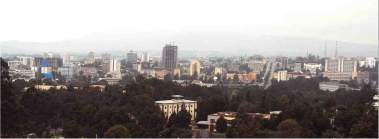 And the answer is ………………….…….. it’s Ethiopia. The capital is Addis Ababa. The Mercado is said to employ some 13,000 people. The script is Amharic.
And the answer is ………………….…….. it’s Ethiopia. The capital is Addis Ababa. The Mercado is said to employ some 13,000 people. The script is Amharic.
There are many more photos in the Ethiopia Gallery at EarthPhotos.com.
And take all the CS&W photo quizzes.


February 7, 2014
Sochi Olympics Watch #22 – Opening Day
January 29, 2014
More from the Former Kingdom of Sikkim – Wednesday HDRs
 A Man and His Yak, Changu (Tsomgo) Lake, Sikkim, India.
A Man and His Yak, Changu (Tsomgo) Lake, Sikkim, India.
 Tiny Restaurant, Gangtok, Sikkim, India.
Tiny Restaurant, Gangtok, Sikkim, India.
 The Other Side of Town, Gangtok, Sikkim, India.
The Other Side of Town, Gangtok, Sikkim, India.
 The road to Changu (Tsomgo) Lake, Sikkim, India.
The road to Changu (Tsomgo) Lake, Sikkim, India.
 The Ropeline, Gangtok, Sikkim, India.
The Ropeline, Gangtok, Sikkim, India.
Click ‘em to make ‘em bigger. These also appear in the India Gallery at EarthPhotos.com, and on Flickr.


January 25, 2014
The Clerk’s Stamp is Money
The northern Indian province of Sikkim, between Nepal and Bhutan, borders Tibet. To visit, non-Indians require an “Inner Line Permit/Restricted Area Permit” issued by the Government of Sikkim Tourism Department.
It’s because of history. China chased the Dalai Lama from Lhasa over these mountains and off the throne in ’59. India took in his cadre and donated a whole city, Dharmsala, to their cause. That peeved the Chinese mightily.
The Tibet/Sikkim border isn’t drawn to either sides’ satisfaction. These are barren, forbidding, 12,000 foot mountaintops. Nearly 2500 died fighting up here in the 1960s. (The border at Nathula reopened for trade in 2006. Goods worth just over $1,000,000 moved through in 2013.)
So they try to keep up with where foreigners are.
The Inner Line Permit is a sheet of legal sized, pulpy paper with wood chips still evident. You can get one at the provincial border for free with passport photos and photocopies of things.
It cautions that the visitor must not overstay or go beyond the restricted areas, and must register at all check posts. It has us write down on paper what the NSA already knows: our arrival point, arrival and departure dates, names, nationalities, and passport information. This form requires a bureaucrat’s stamp.
The bureaucrat’s stamp is money.
•••••
We hurtled to a stop (driving is purposeful in India) outside a building labeled Ministry of Handicraft and Handloom and presented ourselves and our papers to two gentlemen inside. We wished to enter Sikkim via Rangpo town.
The presiding official wore a Millet brand down jacket with a tall, zipped-tight collar. He examined our materials for several minutes.
There would be no small talk. This was Official Business, far too grave a matter for that. Or for that matter, cordiality.
I think he demanded respect with his silence, or at least TAKE ME SERIOUSLY. This was his domain and these were his number of minutes and it was not our privilege to question or expedite things in any way.
Look here now: I can slow down anybody I want.
Here sat a man whose circumstances were not like our own. If he stayed warm at night, it wasn’t by pressing a button on his thermostat. He had a stove, or something. But the road to Gangtok spread before us. He held our progress toward our nice hotel in his hands right now and we would – if we wouldn’t do anything else – we would note it. He pulled a ledger to his blotter and began recording our passport and visa details both on the ledger and on our permit.
The official and his colleague presided across battered and aged metal desks and facing them, we had the better view. Picture windows at their backs revealed the permanently stirred up frenzy of the street, and on the other side of it, well, Ricki’s Cocktail King.
The Ministry of Handicraft and Handloom was sort of a rambling, half open, ad hoc thing. A clock ticked and a bird made a lot of noise somewhere behind us, up in the rafters.
Ultimately our application to enter Sikkim caused no incident (or uttered word), and in time out came The Stamp. It pounded around a few places including our new Inner Line Permit, and, naive as we were, we imagined that that was that and we’d be underway.
And underway we were, not to Gangtok but under our driver Sunil’s escort, picking our way on foot across traffic asserting itself along the pocked lane and a half of tarmac that constitutes the main road into Sikkim, down a hill to the right past Ricki’s Cocktail King toward a bridge.
Nobody in there. (I cast a longing gaze.)
Chaos prevailed unruly on this side of the street. Over here, besides rooms with clerks inside, other clerks stood in windows onto the street, labeled Excise Tax and Forestry Department and more, pay windows for goods carriers inbound to Sikkim where men stood belligerent and flushed and pointed and hollered.
We stood facing green pastel walls in an office lit by a swinging bulb. Two new gentlemen. The inferior clerk sat at his superior’s side on a rolling office chair that had no back, wielding sheaves of paper, fretting. The boss man sat behind a half window with space for pushing critical documents back and forth beneath the plexiglass.
Letters on his window spelled out “C. O. I. Verification Officer.” The C. O. I. Verification Officer took our papers, examined them with a practiced eye to detail and frowned. He wore a high-collared parka similar to the gentleman in the Ministry of Handicraft and Handloom, only it was Kappa brand, not Millet.
With the joy of a cat in a cloudburst, he reached for a sheaf of papers like his adjutant’s and began his work. Which consisted of copying our same details into his papers, performing a vital verification, no doubt, of his could-be conniving colleague up the hill.
There would be a delay now, for the inferior clerk riffed through his stack of papers, shook his head and spoke. The C. O. I. Verification Officer put down his pen and gingerly leaned back in his chair. It was one of those chairs that at a certain point in its trajectory of recline, collapses all at once the rest of the 45 degrees backward.
So the Verification Office was careful, and when his chair settled without capsizing he and his clerk discussed matters for a time. At length, with no small amount of labor he summoned himself upright and handed his clerk a stapler.
During the process a small, older gentlemen entered, puttered here and there, then headed back and down the darkness of a hallway. His movement led my eye to a hand-painted sign farther down, the entrance to the Forestry Department. Between us and the sign an open electrical box on the wall stuck wires out into the hallway. There was just the faintest smell of piss.
In his own time, the C. O. I. Verification Officer completed his work and looked none too happy about it. The Stamp came out and pounded around the C. O. I. desk and our papers.
And we were free to go. Silently.


January 22, 2014
Wednesday HDRs – The Former Kingdom of Sikkim
Click ‘em to make ‘em bigger. These also appear in the India Gallery at EarthPhotos.com, and on Flickr.








